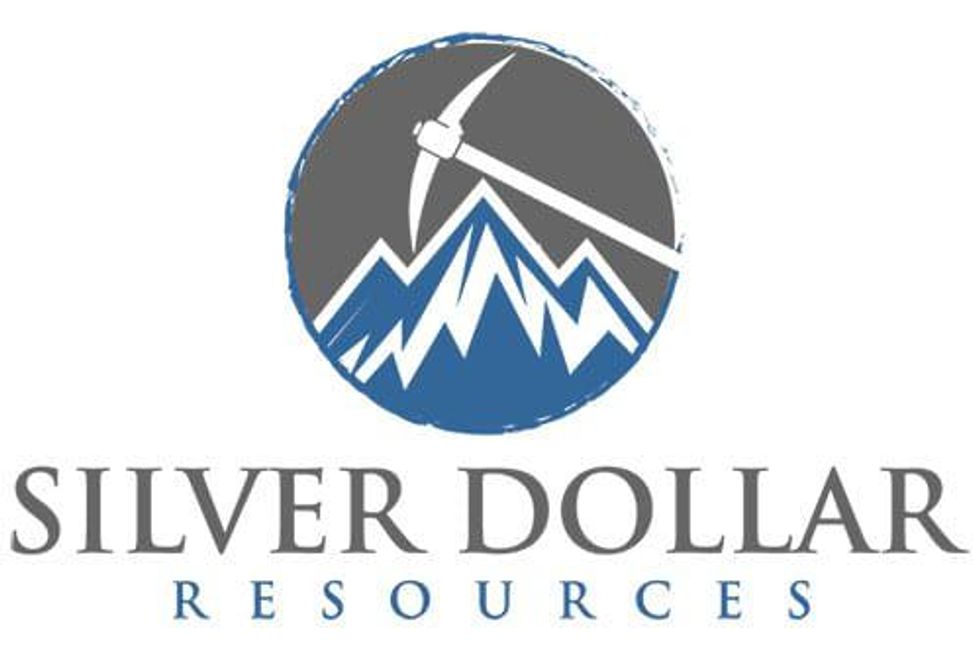How Do Companies Evaluate Exploration-stage Acquisition Targets?

Read this article to know how shareholder value and strong portfolios are built using specific criteria for evaluating acquisition targets.
Coming off some seriously turbulent years in the mining sector, investors are regaining a tolerance for risk and junior companies are finding it easier to access capital and maintain a healthy balance sheet.
With improved cash flow, juniors are in a better position to grow their project portfolios via acquisitions.
“We’re seeing more capital flow into the market. With more money, the juniors are now able to do more transactions and grow both organically and inorganically,” said Rebecca Chan, a partner at PwC Canada.
In a recent report on the junior mining sector, PwC Canada notes that the top 100 TSX Venture-listed companies raised $2.04 billion in equity in the year ended June 30, 2017 — up 174 percent from the previous year. These same companies spent $1.15 billion on exploration, development and M&A compared to only $268 million in the previous 12-month period. “Rising levels of cash along with some increase in spending suggest that confidence is returning to the market,” states the report.
Cash balances rose 74 percent during the 12-month period, hitting a five-year high of $1.57 billion. PwC Canada notes juniors’ ability to maintain robust balance sheets even in the face of increased spending is an “encouraging” sign that this group remains cautious as to how that newfound cash is spent.
Project evaluation: Back to basics
Well-managed junior mining companies are practicing stringent due diligence when evaluating potential M&A targets. “The art of mineral project evaluation involves understanding the key principles and project drivers, as well as identifying and quantifying the level of risk to determine the viability of a project,” according to international consulting and engineering firm Pincock, Allen & Holt.
Project evaluation is usually the purview of the company’s head of exploration and qualified person, who is tasked with quantifying the information attained for the property, assessing its economic potential and determining if the associated risks can be easily mitigated. “As VP of exploration, my job is to find and identify projects that have the potential to host deposits attractive for a takeover or sale to a major mining company,” said Dale Brittliffe, P.Geo., VP of exploration for Silver Viper Minerals (TSXV:VIPR). “In effect, we are taking on the early risk to make it ready for purchase by a bigger company.”
To mitigate that risk, Brittliffe has a specific set of criteria he uses to judge a property’s potential for success. “We have to go back to basics. There are three main criteria that I look at, and those are geological, environmental and social. Those three things have to be very positive or else it’s not worth pursuing. I would also add a fourth criteria: jurisdiction. In effect, what are the regulatory issues? Is this a mining-friendly area?”
Location, location, location
As with any real estate purchase, the most important benchmark is location, and that holds true for mineral properties. A project’s jurisdiction can have a huge influence not only on the geological value of the property, but also on whether or not the new owners will be able to unlock that value.
Projects in mining-friendly jurisdictions with a low risk of appropriation and transparent permitting processes are preferred over those in politically unstable environments. That is why properties in areas such as Canada, Australia and Mexico generally command higher valuations than those in politically unstable regions such as Indonesia, Venezuela or the Democratic Republic of Congo.
Proximity to key infrastructure — including power lines, water, roads and rail — is also important, but not essential for an early stage project, Brittliffe told the Investing News Network. “Exploration on any new project takes years of work. Most important at this stage is a solid all-weather road to the project. Accessibility is a factor, but not the highest priority when looking for quality projects. If we find a deposit big enough, the interest will be there regardless.”
Related to location is the project’s proximity to other mines. The old adage “to find a mine look near a mine” is not just a well-worn phrase; it is actually based on scientific principles that have led to significant discoveries. However, greenfields projects can also be valuable targets for acquisition. “If you can identify a favorable trend in untested ground based on available data, which may include prospective geology and controlling structures, occurrence of alteration and any supporting reconnaissance geochemistry, you can start to develop a conceptual target,” explained Brittliffe. “If a greenfield project is sitting on a known trend with a favorable structural setup and has general similarities to an existing deposit, then that’s also attractive. That’s also how new discoveries are made.”
Brittliffe said the mining-friendly country of Mexico is his target jurisdiction for new mineral property acquisitions. “Mexico is amazingly well endowed when it comes to mineral deposits. There’s a reason it is the number-one producer of silver in the world. Mexico is a bit of a geological anomaly in its density of quality mineral deposits. It’s my country of choice right now. We’re actively looking for projects and have zeroed in on several areas we like, with a general focus on the states of Sonora and Chihuahua. That’s where I want to be looking because there is the best chance of making a big discovery.”
Favorable geology
Geology is of course a major consideration for property acquisitions. The first step is to evaluate everything that can be found on the property, including existing data in the form of exploration results and technical reports. Size is also a factor. Is the project big enough to host an economic deposit? Is a future mining operation feasible?
“In the case of our team, we are trying to find something that we can upgrade, then sell to a major mining company, so we are looking for projects that could possibly exceed a major’s minimum threshold,” said Brittliffe. “Does this property have the potential to host a million ounces of gold as a benchmark? There are smaller profitable mines, but really we’re looking for something that has the potential to be big enough to entice a major.”
After a review of the existing data, the next step is getting boots on the ground for a site visit to further investigate the property’s potential to host an economic deposit and identify any red flags. Here is where experience and knowledge of geological models come into play.
An experienced geologist knows what clues to look for in determining whether or not a project has the required size potential or mineralization strengths based on known models. “For example, if there is a mine in a particular trend that has mineralized structures at a certain orientation, but a cross feature results in a high-grade shoot or zone and we see evidence of similar structural interactions in the field, then that would be very positive and that would be something to examine further,” said Brittliffe.
“We try to digest all of the available information to fit the property into a known model. Our team looks for general styles of mineralization and evidence of mineralizing systems that produce styles of deposits that we are familiar with and that is what we go after,” he added.
In his role as VP of exploration for Silver Viper Minerals, Brittliffe was instrumental in the decision to acquire the Clemente silver-gold property in Mexico’s northwestern state of Sonora. Clemente is within a broad mineralogical trend near to two known deposits, the Cerro Colorado gold mine located 10 kilometers to the southeast and the El Chanate gold mine located 50 kilometers to the northeast.
The project’s position within the Mojave-Sonora megashear — a trend known for structurally controlled orogenic and intrusion-related gold and silver deposits — sparked Brittliffe’s interest from the beginning. “The Mojave-Sonora megashear is known to host very large deposits that tend to be high tonnage and low grade; however, they are very structurally controlled and only once those structures are understood can you can start to build ounces.”
As part of the evaluation for the Clemente acquisition, Brittliffe examined previous field work data, which included results from a 2010 rock chip/grab sampling program. It returned assay values up to 2,930 g/t silver and 5.4 g/t gold, with multiple samples returning values of over 50 g/t silver, which is uncommon in this region of Mexico.
At the site visit, high-grade silver mineralization exceeding 2 kg/t was identified in two separate workings. “Geologically, Clemente is very interesting, but never drilled. The high grades in the existing workings were exciting for us; one is a meter-wide running over 1 kilo silver and 4 grams gold. In addition, there is anomalous mineralization in showings all over the project. Clemente could be a very exciting new story,” said Brittliffe, whose team delineated several highly prospective targets for a Phase 1 drill program that began in November 2017 and will resume in February 2018.
Community and environment
A mining-friendly jurisdiction and excellent geological potential are important, but not enough to ensure a project’s success if you don’t have the support of the local community or if the project is located in an environmentally sensitive area. Communities want assurances that they too will benefit from the minerals mined from their lands and that precious resources such as water are not impacted by mining activities.
“Building effective relationships with these communities is increasingly vital — by some estimates, $20 billion of mining projects are currently stalled or stopped because of community engagement,” states a recent PwC report on the importance of community engagement in mining.
Ideally, potential acquisition targets should have the support of locals and indigenous peoples. As part of any project evaluation, exploration companies will assess the prior operator’s relationship with the local community and local attitudes toward a mineral exploration project in their area. Community concerns go hand in hand with environmental concerns. For many communities, water is a valuable resource and access to unpolluted rivers, lakes and other water sources is critical.
Although Mexico is a mining-friendly jurisdiction with a rich mining history, there is a huge variation from state to state in regards to indigenous and local peoples’ views on mining in their community. “When we are reviewing a property, talking to the local people is absolutely important,” said Brittliffe.
“It is one of the first things we do to assess the underlying issues, and that becomes part of our decision process. Our basic philosophy is that social engagement and environmental responsibility has to be industry standard or better. In my experience, the most effective way to engage with local governments and communities is simple: be honest and open about your intentions, listen carefully to responses and then follow through on any promises made. No exploration project can advance smoothly without trust between the explorer and the local stakeholders,” he explained.
The takeaway
With the renewed growth and optimism in the industry, capital is starting to flow once again toward the acquisition of exploration-stage projects. However, smart management teams are still retaining an air of caution and are strategically evaluating opportunities not only on their technical merits but also in terms of the social, political and environmental risks that may hinder a project’s success.
This INNspired article is sponsored by Silver Viper Minerals (TSXV:VIPR). This article was written according to INN editorial standards to educate investors.



